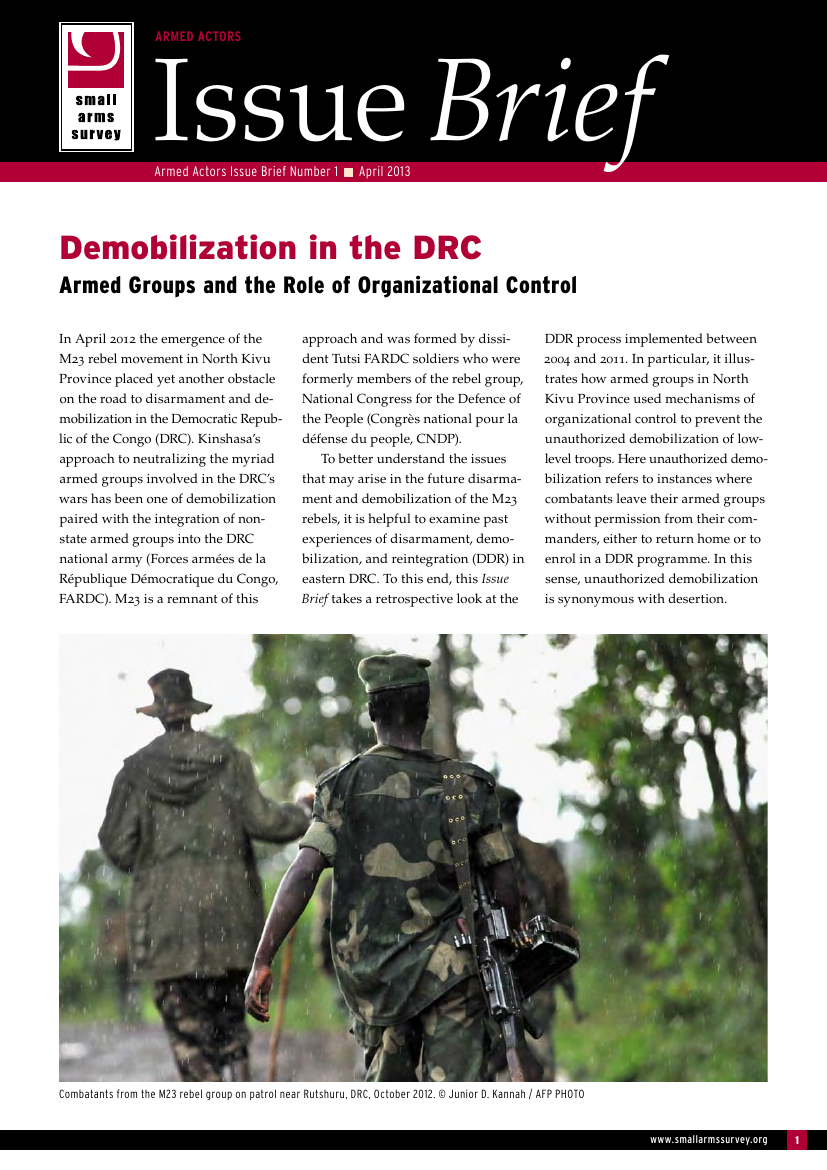
Demobilization in the DRC: Armed Groups and the Role of Organizational Control (Armed Actors Issue Brief 1)
In November 2004 the government of the Democratic Republic of the Congo (DRC) began a nationwide programme of disarmament, demobilization, and reintegration (DDR). Initially it was estimated that 330,000 combatants from ten armed groups would be demobilized and then either returned to civilian life or reintegrated into a reformed national army. However, in early 2008 a further 22 armed groups signed peace agreements and were also incorporated under the DRC government’s National Plan for DDR. Some members of these latter armed groups demobilized and returned home, while the remainder were directly integrated into the DRC’s new national army, Forces armées de la République Démocratique du Congo (FARDC).
The M23 movement is a product of this recent army integration process, and was created by former members of the rebel group Congrès national pour la défense du people (CNDP). To better understand the issues which may arise in the future disarmament and demobilization of the M23 rebels, it is helpful to examine the factors which motivated members of the CNDP and other armed groups in the DRC to enter DDR. It is also pertinent to understand how military commanders within these armed groups employed tactics of monitoring and punishment to prevent the desertion of their troops.
Demobilization in the DRC: Armed Groups and the Role of Organizational Control analyses disarmament and demobilization in the DRC between November 2004 and September 2011. It focuses on six armed groups, including the CNDP, and is based on interviews with low-level combatants, including rank-and-file troops and junior commanders.
Have your say about Small Arms Survey publications and products: take 5 minutes to fill out our questionnaire.